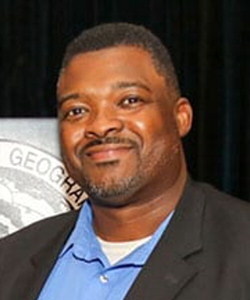The Fall semester is in full swing! I hope everyone has had a wonderful start so far. It is time to get to know your new students, new routines and, for some of us, new schools or colleges. Change into a new school year can be uneasy for some students as they progress from middle school to high school, high school to college, or college to the postbaccalaureate/career world. Educators at all levels are facing change from a variety of aspects of the greater society. Change is good in many regards, especially when it works for the betterment of our students, the greater society, and the planet.
Climate change has dramatically altered life on Earth as was previously known. According to the National Oceanic and Atmospheric Administration (NOAA), there will be dramatic changes to our environment due to climate change. NOAA noted that in 2022, global average sea levels rose to a new record (https://www.climate.gov/news-features/understanding-climate/climate-change-global-sea-level). Several areas of the United States, NOAA noted, are under greater threat than other parts of the globe. Areas along the Atlantic and Gulf Coast saw high tide flooding increase up to 1,100% in some areas. In Texas, as is the case across many regions of the world, record-breaking heat is becoming the new normal (https://www.texastribune.org/2023/06/27/texas-climate-change-heat/). Texans experienced several weeks of temperatures at or above 100 degrees. This has contributed to major ecological threats like wildfires and increased strain on electric systems. It has further hampered human health and animal habitats.
With those thoughts in mind, climate change should be an important part of the PK–PhD education stream. Oldakowski and Johnson (Citation2018) stress that physical geography as well as the quantitative analysis found in human geography are perfect fits in the implementation of STEM initiatives in education. They also go on to stress that studying climate change can help with reading, math, and sciences outside of geography. Having students collecting local climate data, measuring, charting, and graphing while at the same time employing spatial thinking makes for a well-rounded student.
Students themselves are taking on climate change. Students across the globe are advocating for sustainability pledges from their elected officials, pushing their communities and schools to do what they can to help mitigate climate change. Students are also demanding that their instructors tackle the issue in their curriculums as well.
If climate change is not a part of your curriculum, I would like to encourage you to add it in large or small ways. It can be taught in third grade Science, AP Human Geography, middle and high school World Geography, or university-level courses.
Disclosure Statement
No potential conflict of interest was reported by the author(s),
Additional information
Notes on contributors

Greg Hill
Greg Hill has enjoyed a 29-year career in education. He teaches high school AP Human Geography, World Regional Geography, and African American Studies in Mesquite, Texas. Mr. Hill began his social studies teaching career as a World History teacher in Dallas Public Schools. He is also currently a graduate student of Geography at Marshall University focusing on Urban Geography. He is the 2016 recipient of the Distinguished Educator Award: K–12 from the National Council for Geographic Education. He is also the 2020 recipient of the International Educator of the Year Award from the World Affairs Council of Dallas-Ft. Worth. At Horn High, Greg sponsors the Global Young Leaders and coaches the Current Events Team. In addition to serving NCGE as its current president, he has also supported the organization as a member of the Board of the Directors
Reference
- Oldakowski, R., and A. Johnson. 2018. Combining Geography, Math, and Science to Teach Climate Change and Sea Level Rise. Journal of Geography 117 (1):17–28.
